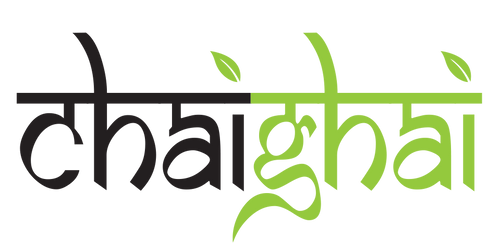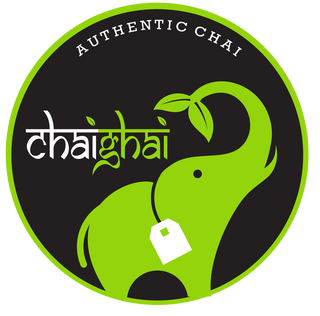“Let food be thy medicine, and medicine be thy food”
-Hippocrates

The energy in a cup of chai can flow into your soul and enlighten your consciousness. Created with love and mindful intention, chai has a spiritual energy that is a scarcity in most drinks. This energy is why we distinguish our chais as Positive Vibes, Pure Vibes, and Calm Vibes. We believe that each chai possesses its own energy profile, which in turn has its own effects on the mind body connection. Beyond the spiritual elements that chai holds, it also has medical properties that help heal the body. The masala spices used in chai rise above the delicious flavour and work to restore the body in a holistic way. Our chais are mindfully designed to each have their own specific health benefits. These recipes dates back centuries to Ayurvedic doctors in India. We have documented the healing powers of chai in previous Chai Guides.
Origin and Healing Power of Chai – Chai Ghai
“Our chai recipes originate from Ancient India, ancestral antidotes dating back over 5,000 years, conceptualized by the maharaja's request for a tea combined with healing spices.”

The maharaja, whose name was lost in the annals of history, requested this elixir to aid in digestion, amongst other things. This maharaja propelled the Ayurvedic practices of food as a medicine and helped place India on a path to holistic health. The brilliant flavours and addition of tea soon followed, as many Indian households began to make their own recipes. These varied based on the unique blend of masala spices they used. The tea leaves hold their own healing power, containing L-Theanine, an amino acid that helps reduce stress. L-Theanine gave chai even more potency as a holistic medical alternative. Many households in India used chai to solve an array of issues, from energizing the youth while studying for exams, to using it as an antibacterial or anti-inflammatory. Ayurvedic practices thus set off the movement known as food as a medicine that has recently resurfaced and grown in popularity.

“For centuries Ayurvedic medicine, an Indian holistic healing system has revered chai for its robust health benefits.”
The use of herbs and spices as medicine began to spread across the world, and along with it the consumption of chai. To those unfamiliar with chai, it is considered a hot beverage like coffee, but to chai lovers, it is known as a medicine. The three ingredients that classify chai as a medicine are:
- Ginger
- Cardamom
- Cloves
It was said that these three ingredients were included in the chai that was created for the maharaja and they continue to be staples in all chai recipes that can be found in India and beyond. Let’s consider both the Ayurvedic and medical properties of each.
Ginger: At the Root of Good Health

In Ayurvedic medicine, ginger is a nutrient rich root that has been at the forefront of holistic health in India for thousands of years. Ginger has been closely bound to the Muladhara (root) chakra by helping to keep our feet in stable connection to the earth. The earth element is vital to understanding how the foundation for life connects to the universe. It can be further unlocked through yoga practices and meditation that work together with ginger's natural nutrients. The medical features of ginger furthers its antidotal potency and heightens one’s metabolism. Many of gingers healing properties stem from gingerol, a bioactive compound that helps to reduce nausea and create immunity to cold and flu symptoms. It is a powerful anti-inflammatory for its ability to loosen stiff joints and reduce pain caused by osteoarthritis. Ginger also contains antioxidants that eliminate oxidative stress which can cause migraines. This stress brought on by an increase of free radicals in the body is a primary cause of inflammation, which ginger can alleviate. Ginger's holistic health benefits are the reason it has been so impactful in the food as a medicine movement.

Ginger is a leading ingredient in chai for its flavour and healing properties, with nearly all Chai Ghai blends All Products – Chai Ghai containing it. Since ginger, known as adrak in Hindi, contains such an abundance of nutrients, it is heavily used in chai recipes such as Adrak wali chai. This chai combines black tea, milk and cardamom to create a delicious health concoction centered around ginger. The gingerol, packed with flavour further triggers receptors found in the tongue that gives the spice its unique taste. These elements help make a cup of chai with ginger, a therapeutic experience that invigorates the senses.
The Amazing and Mighty Ginger - Herbal Medicine - NCBI Bookshelf (nih.gov)
Cardamom: Seeds with Holistic Healing Properties

Cardamom is a super spice at the epicenter of the Indian natural health and medical field. It has been used for centuries to help soothe the body while stimulating energy in the mind and spirit. Cardamom oil adds to its holistic capabilities by helping to balance the Svadhisthana (sacral) and Manipura (solar plexus) chakras, as it represents fire and passion, elements abundant in these two chakras. In Aryuvedic medicine, cardamom is a tridoshic spice since it creates stability among the three doshas: vata, pitta and kapha. The serenity that is released permeates all facets of consciousness for increased clarity and realization. Cardamom further offers healing properties for the body through its antibacterial benefits, contributing to oral health by fighting cavities and gum disease. It is also used to strengthen the heart by lowering cholesterol, thus increasing blood flow by clearing the arteries. Lower blood pressure can help those with diabetes maintain their glucose levels in a more manageable way. Cardamom also works to detox stress from the body, which improves liver function brought on through accumulated damage caused by swelling and scarring. This usage makes cardamom a valuable super spice, as it continues to show wide ranging benefits in the food as a medicine movement.

Cardamom is also the most common ingredient used in making chai. When passing a chai wallah on the streets anywhere in India, whole green cardamom pods are most likely seen floating in the golden mixture. Our Om Chai has whole pods in it, as it’s an organic recipe. Cardamom can also be ground up when making chai, and this can increase its scent and flavour. We adopt this technique in our Mummyjis Masala Chai recipe. The methods used typically depends on the recipe. Cardamom’s vital role in making chai, a tea with a vast importance in the history of India’s culture, solidifies its title as the queen of spices.
Cardamom: 7 health benefits, dosage, and side effects (medicalnewstoday.com)
Cloves: Natural Aromatic Flower Buds that Aid Digestion

Cloves are another super food full of antioxidants that have been used in holistic medicine by many cultures for centuries. In Ayurvedic medicine, cloves are particularly important to the kapha dosha, which is centered on earth and water, elements vital in grounding the body’s core. The kapha dosha promotes a healthy immune system and creates calm vibes with its stable presence. Cloves are known as a warming spice and create a thermogenic reaction in the abdomen that can help build positive energy which radiates outward. They also possess compounds that ease digestion by preventing erosion of the gastrointestinal tract, helping to curb appetite, due to their high levels of fibre. Another mineral found in cloves is manganese, important in increasing the strength of cartilage and bones. The aroma of cloves further reduces anxiety and fights insomnia by calming the nerves. Cloves also contain high amounts of beta-carotene, a precursor for provitamin A that helps to maintain eyesight. It is clear that both the body and the spirit benefit from cloves.

In addition to cloves holding an important position in the food as a medicine movement they also play a significant part in the healing aspects of chai. This super spice can be found in many of our Chai Ghai blends All Products – Chai Ghai and has been included for its cleansing properties and purifying elements. Cloves offer a distinct spicy flavour that counteract other sweeter tasting spices such as cinnamon or nutmeg, rounding out the taste of chai, and offering a different part of the palate to be engaged. A traditional masala chai is supposed to offer both sweet and spicy flavours, the cloves play a big role in the spicy aspect. They also give the chai a bit of a jolt, waking up the consumer instantly. Cloves further give chai an added warming aspect that creates a soothing feeling in the stomach, which makes drinking a cup the perfect choice for a cold winter day. Clearly this is a vital ingredient for the taste and medical properties that chai is renown for.
Cloves: Health Benefits, Nutrients per Serving, Uses, Safety Information, and More (webmd.com)
“When diet is wrong, medicine is of no use, when diet is correct, medicine is of no need”
-Ayurvedic Proverb

The food as a medicine movement may be gaining popularity these days, but its practices come from a foundation grounded in ancestral tradition. Ayurvedic medical practices date back thousands of years and have had a lasting impact on Indian culture. When the maharaja first requested a recipe for a new elixir, combining spices with nutrients vital to good health, he could have only hoped for the impact that chai has had. This impact quickly spread throughout India as chai was adopted for its medicinal benefits by many households. Chai has since extended its reach and consumption to the rest of the world because of its distinct flavour and significant healing properties. This is in part due to super spices such as ginger, cardamom and cloves, which contain vital nutrients that help to classify chai as a medicine. Chai contains elements of holistic health that double as flavourful ingredients that have grown its global popularity. More than just a caffeinated beverage, chai is a medicine, that has been treating an array of illnesses. Indian mothers will certainly continue to look to chai as the first line of defense when their children display any symptoms of potential ailments. After all, mother knows best.




